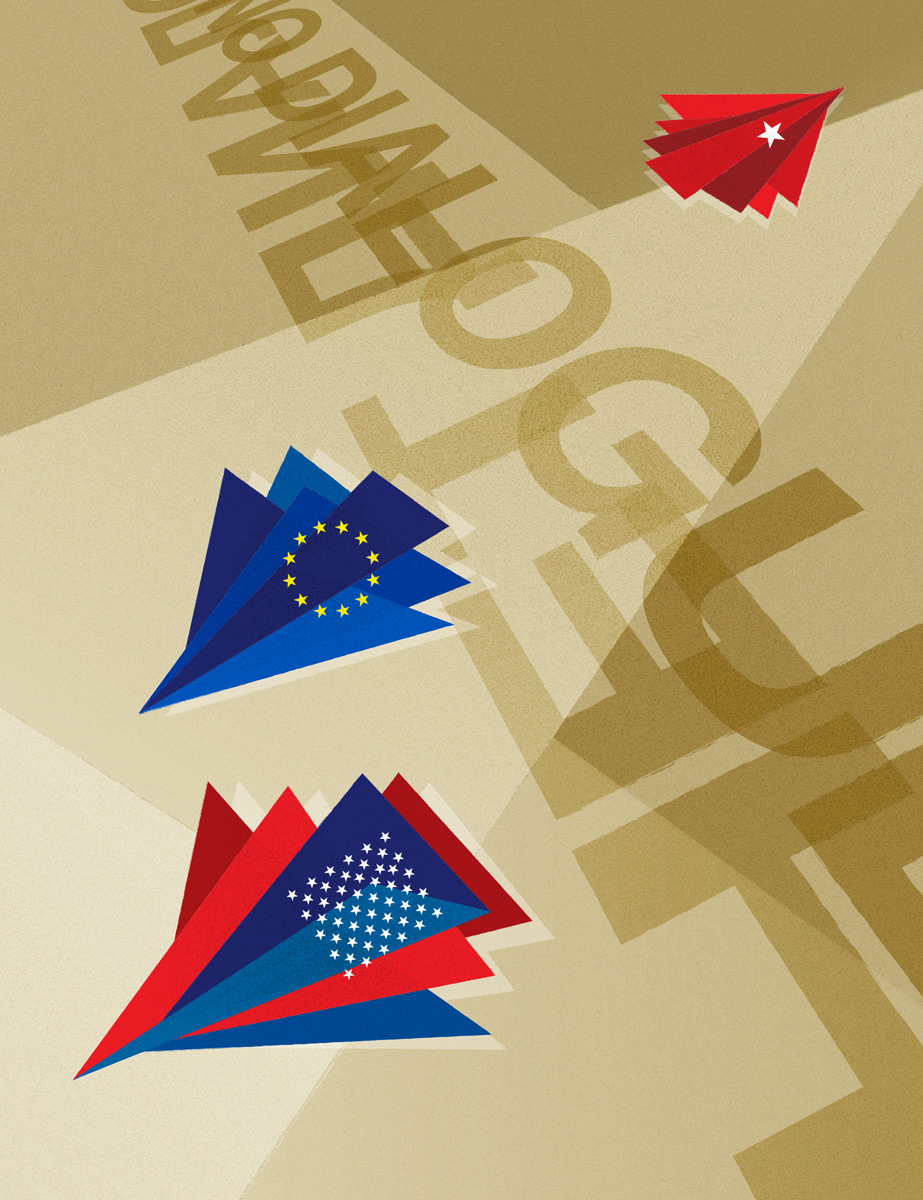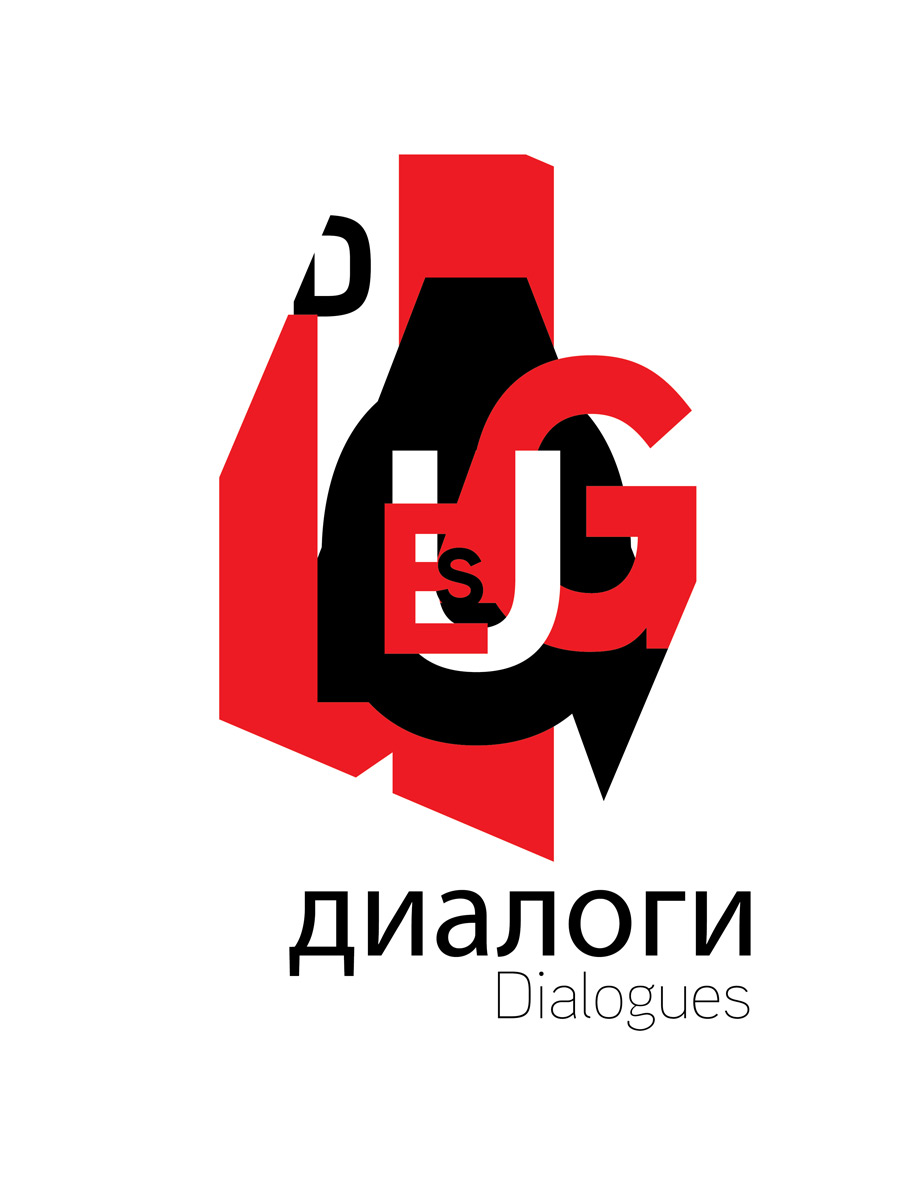











![Untitled [Crimeany!]](https://images.squarespace-cdn.com/content/v1/54879a43e4b015a9c3db4b00/1426540277010-0M7341G4UE7NI84BJX1E/Stefan-Bucher.jpg)



When the Soviet Poster Show was happening in 1989, it seemed to many American that for the first time they could begin to call a Russian their friend. When the Secretary of the Union of Soviet Artists, Oleg Stavostiuk, arrived in San Diego as the invited guest of the AIGA/San Diego, he handed out lapel buttons with the face of Mikhail Gorbachev, the iconic face of a political rock-star sporting his signature mole on his forehead. San Diegans wore the buttons to the exhibition in 1989 as a symbol that the Cold War freeze was thawing and like us, the Russians were as interested in us as we were in them. The Soviet Poster Show included the iconic communist faces American had learned to fear, Stalin with his fist clenched, Lenin brooding and pensive, mother Russia strong, defiant and isolated by choice. Now twenty-five years after that premier, displaying images of Russian leaders that Americans had learned to fear, seems again to be an un-American act. In an increasingly secular and polarized world, art serves again as a peace offering, a detente in a time of secularism, war and strife in places like Kosovo and Chechyna.
DIALOGUES is a collection of commissioned contemporary posters done by American designers and artists in 2015. It is an attempt to reopen a dialogue that began in 1989, between Russia and the world. A dialogue of symbols, gestures and one-on-one encounters that have the potential to escalate into new and positive events. We saw it happen in San Diego in 1989, when American citizens wore lapel pins of a Russian President and shared toasts in salute of a new friend and fellow artists. Those friends and artist are still here and still making their art for change and to reopen a dialogue.

This piece blends visual iconography, layering and color to comment on the arms build up during the Cold War. During this period in history we also see the rise of fast food. Influences include Russian born artist Wassily Kandinsky, the energetic visual language of Keith Haring as well as primitive indigenous peoples.
Joel Nakamura 2015

Rushnyk embroidered patterns are a historic cultural tradition in Ukraine depicting life and the ancestral heritage of the region through patterns, icons, and cryptograms. Common folk art symbols are combined with images of war, reflecting current events in Ukraine. The embedded phrase asks for 'Peace On Ukraine.'
Gary Benzel 2015

“Peace is the only war worth waging.” – Albert Camus
Life is short. Time is limited. Our resources are finite. Humanity seems content to debate its differences and fight amongst ourselves - even to the death. Can’t we all just get along? Love conquers hate. Kindness trumps anger. For the sake of our children, our families, our nation and our world. It’s time to evolve beyond our fears and differences.
Don Hollis 2015

My grandmother’s cousin, William Christian Bullitt, married Louise Bryant, who was played by Diane Keaton in Reds, in the 1920s. Bryant had been married to John Reed, a noted American born communist. At that time, Bullitt considered himself one of the radical intellectuals and supported the Soviet cause. In 1933, he was appointed the first US Ambassador to the Soviet Union. While there, his concept of the Soviet Union and communism soured. By the end of his service, he was openly hostile to the Soviet leadership.
Perhaps it was this story, told to me as a child that gave me no romantic notions of the Soviet Revolution, constructivism, and the rise of communism. The poster is an example of the Soviet leadership’s concept of human rights and democracy.
Sean Adams 2015

As Russia continues to support aggressive moves in Ukraine, I’m brought back to my years of editorial illustration in the late 80’s and 90’s during the cold war, and the Soviet Union break up.
The fate of Ukraine has me concerned for all the Baltic States, and former Soviet Bloc countries. Represented in my piece by the doves, their fluttering forms emerge from the waves, freed as the water flows from the melting ice, a symbol of the old cold war. The Russian bear looms, aggressively reaching, and disturbing the peace of the doves. Their rising shapes create his form, then metamorphose and spread across the sky.
Will they remain free, as bright stars? Or fall back into the red?

The potential of the arts to promote peace and social change has always interested me. To craft a culture of peace you have to first imagine it. Artists around the world and throughout history have given voice to that ideal. A sharp pencil can be a powerful weapon to communicate the pathos of war.
I’m greatly inspired by folk arts, many of which are living traditions. Birds are a common theme in Russian folklore and this region has a particular gift for storytelling. The folkloric pattern inside the bird represents a diverse patchwork of beliefs and opinions. The colors tip their hat to Russian Constructivism. When creating this poster, the recent peace agreement and conflict between Ukrainian forces and pro-Russian separatists was on my mind and in the news. The two leaves symbolize differing points of view with the pencil of the artist providing a stable perch for the idea of peace to take hold.
Rafael López 2015

Although I was not alive for it, one of the most visibly powerful embodiments of the Soviet era, for me, is the Cuban Missile Crisis that pitted an international standoff between John F. Kennedy and Nikita Khrushchev.
The strategic, provocative game-of-chance between them took place through the nautical embargo which evoked a narrative between the two great yet drastically different-ideological powers of the world. This gamble could have played out with dire results for our nations and world societies. Luckily, the “minimum response” mindset that resulted created not war, but relative peace, in a disturbing time.
In this piece, I pay homage to symbols and style of Russian folk art, the multi-dimensional power that set-off an arms race, the gambling attitude of the crisis and I quote a line (in both English and Russian) from the Soviet-era poet Natalya Gorbanevskaya.
And at thirty-three,
I encountered, not misfortune
but history. Strange
to be cutting, not a door or a window through,
but a skylight,
so closely barred, at that,
that the clouds, through it,
look like links in chains.
Steven Morris 2015

Growing up in Italy, I impartially watched the relationship between the USA and Russia unfold. There were many phases, some bringing the two countries close together and others separating them into completely different directions.
The airplanes moving in different directions represent the divide in ideology between the US, the EU and Russia especially in light of the latest events. Although the message reads NO DIALOGUE, the overlapping and interconnecting words communicate the complexity of the relationship where completely ending the dialogue is almost impossible.
Fabrizio Scippa 2015

Seeing and learning about Russian Constructivism for the first time was a visual revelation to me. Its dynamism, inventiveness, boldness, and confidence continue to be a source of awe and inspiration. For me its major significance has been in the influence it had on modern typography, starting with the work of Jan Tschichold.
My poster is purely typographical and takes formal cues from constructivism pairing it with the idea that dialogue very much depends on a desire and willingness to deeply engage with content to decipher meaning.
Máximo Escobedo 2015

I have always been a huge supporter of LGBT rights. It is one of the reasons I moved to Chicago working as the Design Director to get President Obama reelected. It is insane to me that in the year 2015 the LGBT community in Russia has to hide who they are. Love is love.
Josh Higgins 2015

Amy and I were struck by learning that the struggles for contemporary Russian women and our own experiences were in some ways not that dissimilar. We are so very fortunate to live and work in the US and have many more freedoms than our counterparts in Russian/Soviet Countries. Cultural and political differences aside, on a human level, our piece explores an inner dialogue we have as professional, single women in the US and imagine there are more similar thoughts then differences for professional women in Russia in 2015. Women are expected to compete toe-to-toe with the male counterparts, in addition to keeping a home, raising children, being kind, considerate, nurturing, things men are not necessarily expected to do. And really, if the truth be told, we would really just love to sit in studio, listening to music, making a dress!
We are sisters, partners, friends and have both been influenced by so many different artists, some of which include Russians artists; Wassily Kandinsky, Marc Chagall and Soviet clothing and textiles of the 1920's, strong, bold, modern even for today.
Amy & MaeLin Levine 2015
![Untitled [Crimeany!]](https://images.squarespace-cdn.com/content/v1/54879a43e4b015a9c3db4b00/1426540277010-0M7341G4UE7NI84BJX1E/Stefan-Bucher.jpg)
If anybody has earned the right to ride around the Russian countryside with his shirt off, it’s Doyald Young. In the context of a Russian themed poster show in his honor I do hope this would make him smile.
Stefan Bucher 2015

Western sanctions are taking a toll but not just on Russia. This poster examines the implications and consequences of sanctions. As they undermine Russia’s economy, sanctions also impact the long-term goals of other countries resulting in global turmoil.
Joel Sotelo 2015

In 1995–for some random reason I designed and printed this poster. It was during the period not long after the demise of the Soviet Union. The newly independent countries were getting their feet on the ground, struggling with political structures, economic systems, and basic food and shelter considerations for their now-free citizens. I was reading an article about the Union breakup and came across this 1817 foretelling poem by Alexander Pushkin.
A Russian designer working in my studio translated the text. It resonated for me, the FREEDOM we often take for granted in our own country. I thought that having the Russian text there-but not there was a metaphor for the deeply meaningful words of the poem being understood but not spoken, silent behind their meaning. Next to one of my etchings from that period, I printed the text at my letterpress shop One Heart Press, English in red, and Russian blind de-bossed into the paper. This piece originally went into a drawer when I printed it waiting for the right moment to now speak–the small broadside with a mighty voice.
Michael Osborne 1995